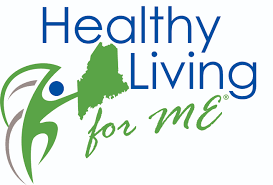Unveiling the Side Effects of Pumpkin Leaves

Introduction
When it comes to the wonders of nature, few things captivate us, like the vibrant colours and flavours of vegetables. One such vegetable is the pumpkin, whose versatile parts include the often overlooked leaves. Today, we delve into the lesser-known aspects of pumpkin leaves, particularly the potential side effects associated with their consumption. Furthermore, we explore the traditional uses of these leaves, offering us insights into our ancestors' wisdom and connection to the natural world.
The Health Benefits of Pumpkin Leaves
Before we delve into the potential side effects, let's acknowledge pumpkin leaves' numerous health benefits. These leaves are a nutritional powerhouse packed with essential vitamins A, C, and E and minerals like calcium, iron, and potassium. While their vibrant green colour may draw our attention, the nutritional content truly matters.
Side Effects of Pumpkin Leaves
While pumpkin leaves are generally safe for consumption, it is important to know the potential side effects, especially in specific circumstances. Some individuals may experience mild gastrointestinal discomforts, such as bloating or gas, after consuming pumpkin leaves. These effects come as a result of the high fiber content present in the leaves. Those with sensitive digestive systems should start with small amounts before gradually increasing the serving size to avoid discomfort.
Another consideration pertains to individuals prone to kidney stone formation. Pumpkin leaves contain oxalates, which can contribute to calcium oxalate kidney stones formation. If you have a history of kidney stones, it is essential to consult with your healthcare provider before incorporating pumpkin leaves into your diet. They can offer guidance tailored to your specific needs and provide advice on moderation and consumption frequency.
Exploring the Traditional Uses of Pumpkin Leaves
Across various cultures and throughout history, pumpkin leaves have played an integral role in traditional culinary practices. In many African countries, pumpkin leaves are a staple ingredient in dishes such as stews, soups, and sauces. Revered for their taste, nutritional benefits, and ability to enhance the flavours of diverse dishes, these leaves have been cherished by generations.
Beyond culinary use, pumpkin leaves have also found a place in traditional medicine. Some regions believe these leaves possess medicinal properties, aiding in treating conditions like diabetes, high blood pressure, and gastrointestinal disorders. However, it's important to note that scientific evidence supporting these claims is limited, and seeking professional medical advice is always recommended.
Embracing Pumpkin Leaves Responsibly
Incorporating pumpkin leaves into your diet can be a delightful and nutritious experience, but it's crucial to do so responsibly. Understanding the potential side effects of their consumption and being mindful of your health needs is key. If you explore the culinary possibilities of pumpkin leaves, consider incorporating them into various dishes such as salads, stir-fries, or as a complement to other vegetables. Doing so allows you to savour their unique taste and nutritional benefits while minimizing the likelihood of experiencing any side effects.
Conclusion
In the world of vegetables, the pumpkin holds a special place, with its leaves offering many health benefits and culinary charm. However, it is essential to be aware of the potential side effects of pumpkin leaves, particularly for individuals with sensitive digestive systems or a history of kidney stones. By exploring the traditional uses of these leaves, we connect with our cultural heritage and gain a deeper appreciation for the wisdom passed down through generations.
So, when you encounter a pumpkin next time, please take a moment to consider its leaves as well. Embrace the beauty and goodness they offer, considering the importance of balance and individual health considerations.







